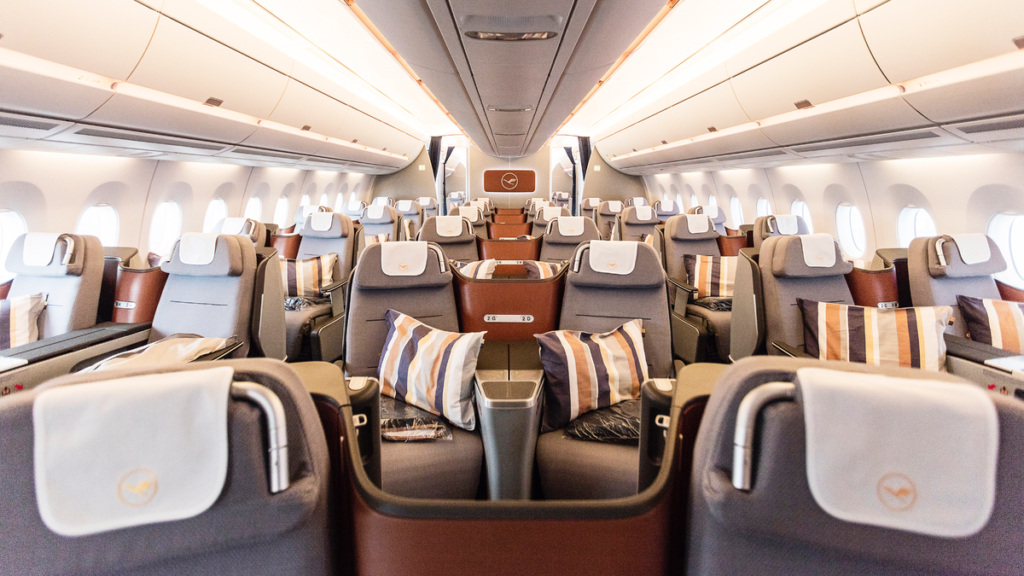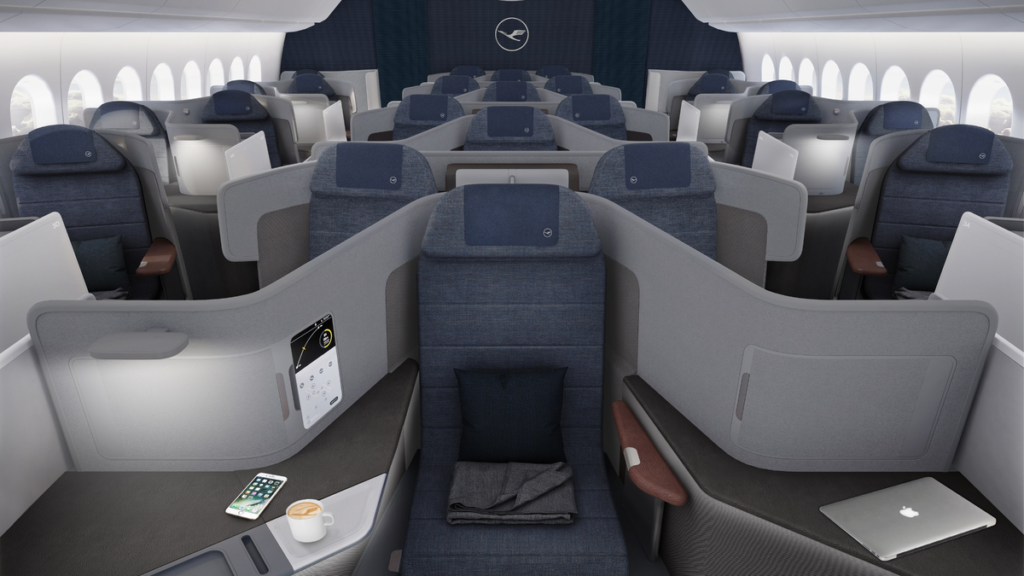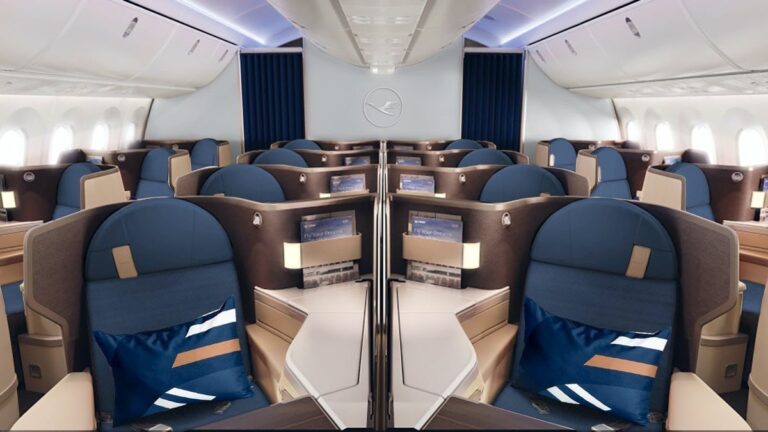Lufthansa’s inaugural Boeing 787-9 aircraft will commence its first flights next week, marking the introduction of a fresh business class seat for the esteemed German flag-carrier

Passengers flying in the business class of Lufthansa will experience a roomy flatbed design, built upon the well-known Super Diamond platform developed by Collins Aerospace. This platform is also utilized by other prominent airlines, such as Air Canada’s Signature Class, British Airways’ doored Club Suites (although Lufthansa’s seats do not have sliding doors), Qatar Airways’ A380 and earlier generation A350s and 787s, as well as American Airlines’ 787s and 777-300s.

Each of the 26 business class seats onboard the Lufthansa Dreamliners is accompanied by an expansive 18-inch HD video screen, ensuring a delightful in-flight entertainment experience.
Apart from providing ample space and convenient storage compartments for each traveler, the 1-2-1 seating arrangement offers a level of privacy and 100% direct aisle access that is absent in Lufthansa’s traditional business-class configuration

There is a slight catch to this: both the aircraft and the seats themselves are not ‘new’ in the typical sense.

Lufthansa’s initial batch of five Boeing 787 aircraft was originally intended for China’s Hainan Airways. However, due to financial challenges, the Chinese carrier never took delivery of these jets.
Consequently, Lufthansa’s Boeing 787s are equipped with Hainan Airways seats throughout the cabin. The interior design, known as “Dream Feather,” was developed by the renowned UK-based design firm PriestmanGoode and remains unchanged.
Instead of replacing the seats entirely, Lufthansa will refurbish them by applying fresh coverings that align with the airline’s branding. Some adjustments will also be made to the wall panels. A side-by-side photo of the business class cabins of Lufthansa and Hainan Airways Dreamliners clearly showcases these modifications.

Lufthansa followed a similar strategy for its latest set of Airbus A350s, which were acquired from Philippine Airlines and retained the original PAL seats.

Lufthansa Group CEO Carsten Spohr accurately characterizes the first Boeing 787 aircraft as featuring an “upgraded business class” compared to the existing product. A Lufthansa spokesperson further explains that the 787 seat signifies a significant initial step towards improving the airline’s long-haul offering.
Consequently, when flying business class on Lufthansa’s twin-aisle jets, passengers can experience three different seats. These include the ‘classic’ 2-2-2 business class found on most of the fleet and the 1-2-1 seating arrangements present on the former Philippine Airlines A350s and former Hainan 787s.
The latter two seating configurations are designed as an “interim” business class, connecting Lufthansa’s previous-generation and next-generation seating offerings.
In 2023, Lufthansa plans to introduce a fourth business class seat option to its lineup. This will coincide with the launch of brand-new A350s and 787s, marking the highly anticipated debut of the airline’s long-awaited “next generation” business class seat developed specifically for the Boeing 777-9.
The innovative design of Lufthansa’s business class features alternating rows of 1-2-1 and 1-1-1 seating arrangements. Among these, the single middle seats are called “thrones,” offering solo travelers an enhanced personal space and privacy.
It has been mentioned that Lufthansa may consider charging an additional fee for these highly desirable throne seats, along with the bulkhead row seats that can be transformed into extra-long beds, as part of their “business plus” initiative.
As previously reported, Lufthansa plans to include a small first-class cabin on ten of its A350s, which will be based at the airline’s Munich hub.
